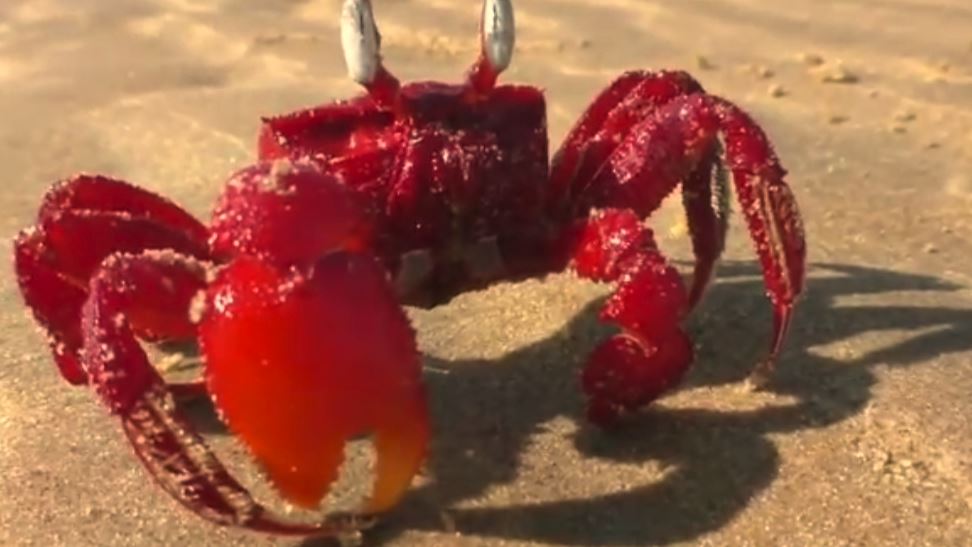Mahakalapara: Red crabs have started their migration to the expansive sea beach of Gahirmatha marine sanctuary under this block in Kendrapara district for mating and spawning.
The scene of red crabs gathering in hordes on the vast sand-bed of Hukitola, Madali, Lunchghola, Tanda, Agarnasi islands of the sanctuary is a sight to behold. The deep burrows dug out by them on these islands have become their new homes as they arrive in hordes for spawning.
After mating, male crabs go back and the females stay behind in burrows for about two weeks to lay eggs. Each female can produce up to one lakh eggs, which it deposits into the ocean.
Red crabs play a great role in protecting the ecological balance in the mangrove forests, maintaining biological diversity and protecting the marine environment.
These crabs dig out two to three feet deep burrows and make it their new home for mating. They feed on dead seaweeds, dead fish and small marine creatures. Breeding mostly takes place during the winter season when the female crabs give birth to hundreds of baby crabs. Later, they move to the beach and then into the sea with the mother crabs.
Not more than two inch in length, these crabs survive for two years. They prefer to live in hordes and are apt in sensing natural calamities and in changing places before their arrival. They immediately go into hiding in their burrows or crawl into sea on sighting any enemy.
Such crabs had a very big population in the 90s but climate change, frequent sea storms and environmental damage and toxic effluents discharged into the sea by industrial plants have greatly affected their population. Moreover, coastal erosion and plastic materials which get washed ashore and dumped on the beach have proved to be impediments for their free movement on the beach. Birds such as kites and crows, dogs and jackals mostly prey on these crabs.
An environmentalist Samarendra Mahali said that red crabs play an important role in maintaining ecological balance. The environment remains clean as they feed on marine waste for which their protection and conservation is the need of the hour.
A local intelligentsia Subhash Swain said there was a time when these crabs were found in great numbers in Gahirmatha but their population is dwindling due to various reasons. He said that their population can be increased if the Forest department and government take some urgent measures before it is too late. Otherwise, the future generation will only see them in pictures. The tourists visiting the beach have also a role to play,” he added.
When contacted, Gahirmatha forest ranger (in-charge) Manas Kumar Das said that his department is aware of their importance and taking necessary steps for their protection.
post news network
